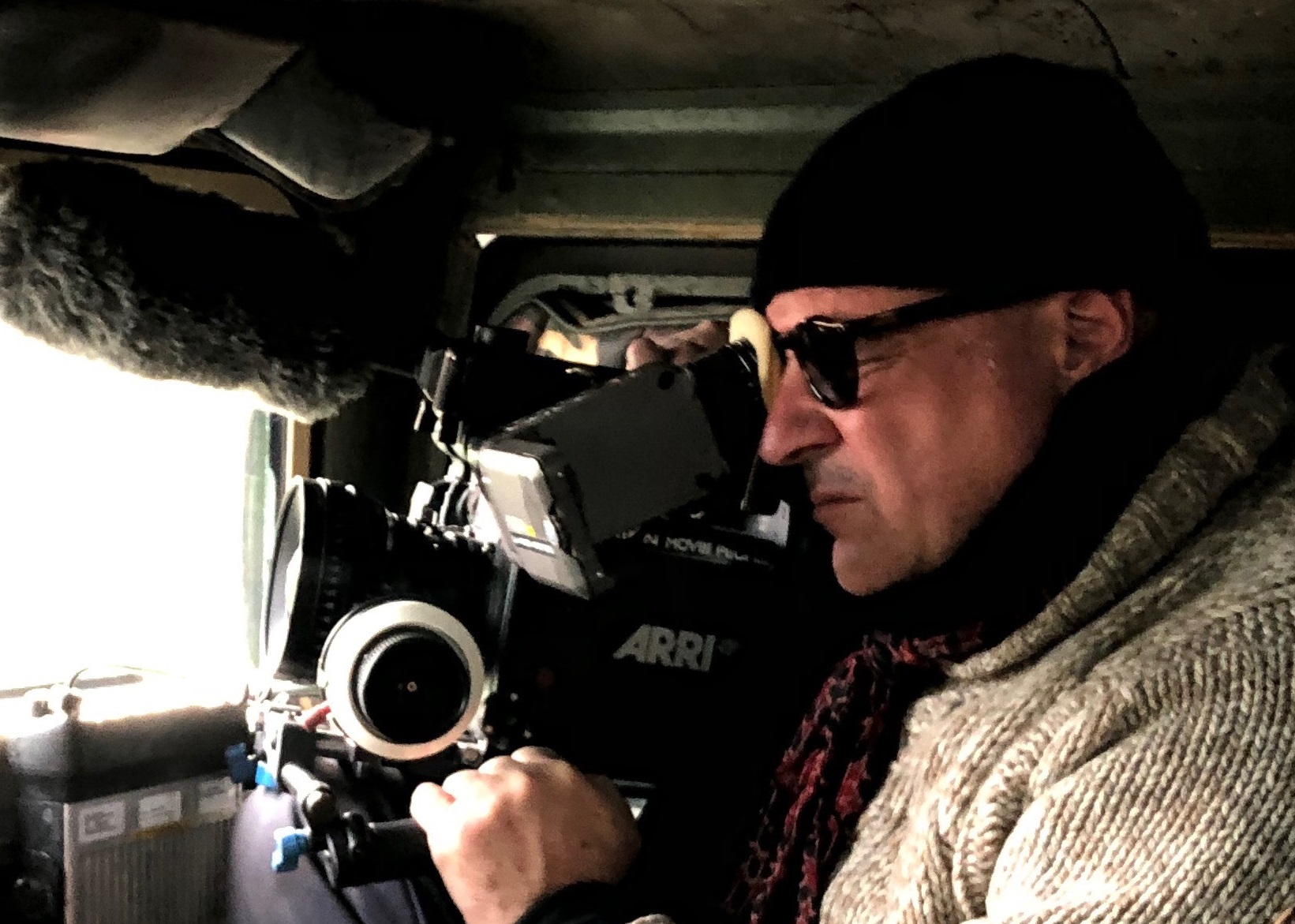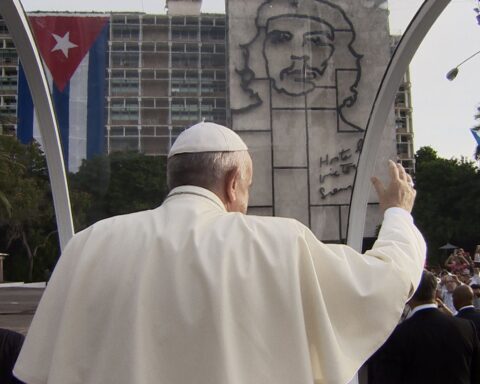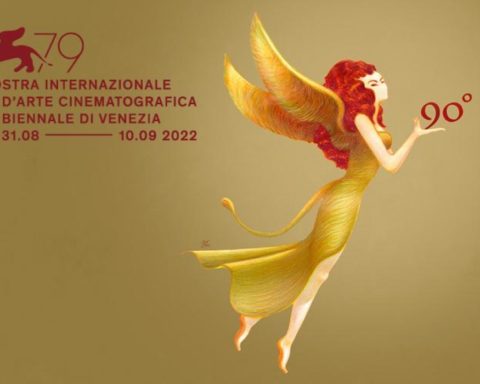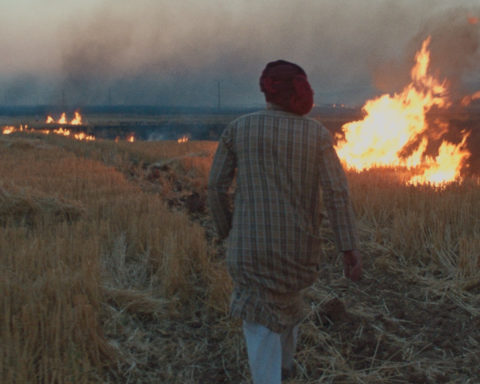A special retrospective of the works of Gianfranco Rosi marked the 33rd edition of the International Documentary Film Festival Amsterdam (IDFA), the world’s largest gathering celebrating non-fiction cinema. Alongside the retrospective, the festival hosted a conversation with the filmmaker and the festival’s artistic director Orwa Nyrabia on 18 November.
Born in 1964 in Asmara, Eritrea (a former colony of Italian East Africa), Rosi moved to New York in 1985, where he graduated from the New York University Film School. The Italian master’s complex cinematic journey into the real began in the early 1990s, when he produced and directed his first medium-length piece, Boatman (1993), after over five years spent documenting life around the banks of the river Ganges. To date, Rosi’s filmography is small but certainly impactful. Apart from a few shorts made before Boatman, he’s made five features (all of them included in this strand alongside Boatman): Below Sea Level (2008), El Sicario – Room 164 (2010), Sacro GRA (2013), Fire at Sea (2016) and Notturno (2020), which world-premiered during this year’s Venice Film Festival and is Italy’s Best International Feature submission for the 2021 Academy Awards.
In Boatman, Rosi traces the essential elements of his approach to the art of documentary: a strong interest in human (and humane) subjects, a solitary mode of filmmaking where he directs, shoots, produces (and often writes) his pictures, the presence of blurry boundaries between fiction and non-fiction and the ability to tell us through fragments of cultures and societies about the lives of extraordinary common men. In this, his first notable piece, Rosi planted his camera on a boat piloted by his main character, who rows past bathing locals, ritual water burials, cremations and a wide, chaotic humanity rich with mysteries and traditions. Through its simplicity and in less than an hour, viewers are offered the portrait of a man and his microcosm, while giving profound insights on the role of religion in Indian society, the caste system and the troubled local politics, spiced up by a light touch of irony. In this unconventional “travelogue,” there is no search for journalistic rigour or an easy exoticization of the boatman’s life. Instead, a genuine desire to gain a better understanding of his vision of the world is plain to see on screen.
Rosi’s first feature following Boatman was Below Sea Level, which was released after five years spent following a community of down-on-their-luck individuals “with no cops, no firemen, no government, no electricity, no water,” living “at an abandoned naval base and still active bombing range 190 miles southeast of Los Angeles and 120 feet below sea level.” In this film, it’s even more evident how much careful, patient observation and time is necessary for Rosi to develop a narrative capable of digging deep into the human soul. Speaking of this aspect of his work during an interview in Screen Daily in 2018, Rosi admitted: “Without time, I wouldn’t be able to make films in such depth. Time allows the person and the situation to change and to grow. I create a narrative on the days of change; sometimes things pass by in front of you and you have to be able to capture something very small and very fast.” In Below Sea Level and his later works, time allows Rosi to gain lucidity, to choose the right distance and spaces, and ignore any kind of pre-set expectations, perhaps putting himself in someone’s else shoes while refraining from judgment. This approach makes even more visible the strength of the characters Rosi chooses to profile. His interests clearly lie with those whose lives at the margins of society are, to a greater or lesser extent, shattered in unique and complicated ways.
Rosi’s second feature documentary, El Sicario – Room 164, is a penetrating account of an undisclosed Mexican hatchet man working for both local drug cartels and the Chihuahua State Police. The sicario, known to have killed hundreds and expert in torture and kidnapping, describes in detail his misdeeds and the mechanisms of his organization with surgical precision. The setting is essential but meaningful, as it is entirely shot in a simple motel room where the man once used to torture and kidnap his victims. The 80-minute documentary is a long, terrifying testimony of his dehumanization process. The hitman’s face is concealed by a black mesh hood and he talks about his crimes with a marker and a notepad, while keeping, for most of the time, the same calm but firm tone of voice, as if explaining to the viewers how to assemble a cupboard or the rules of a board game. The man’s final confession and act of disclosure—when he finally admits to having cried “like an elephant” after realizing the evil he caused and expressing his will to live life fully again—is rewarding and cathartic.
A three-year long creative process made possible Sacro GRA, Rosi’s next film. In this documentary, the director depicts life along the Grande Raccordo Anulare (GRA), the ring-road highway that circles Rome (the largest of its kind) and the ideal threshold for a European capital divid-ed in two complementary universes: the first populated by the inhabitants living within Raccordo’s boundaries and the second by the ones who live outside of it. Loosely inspired by Italo Calvino’s 1972 novel Invisible Cities, Rosi is able to tell a consistent piece of contemporary “romanity,” where surreal, fiction and reality merge and create an impressive collage of characters that are not so different from the ones depicted in many iconic commedie all’italiana. Some of these include an eel fisherman who shows skepticism towards the fishing conglomerates threatening his livelihood, an old small-time actor, a nobleman renting out his family home as a bed and breakfast and as a location for film shoots, seasoned prostitutes, a couple of paramedics and many more. Except for a possible “light touch” subtext on Rome’s major challenges and the struggles of people living, once again, at the margins of society, this picturesque “pantarhei” mosaic film, flavoured by its lack of a linear narrative arc, invites viewers to focus all of their attention on the emotional value of smaller moments and circumstances.
Rosi followed his profile of Rome with the acclaimed Fire at Sea, which was shot on the Sicilian island of Lampedusa during the European refugee crisis, and contrasts the migrants’ turbulent Mediterranean crossing with the ordinary life of the local inhabitants. Here Rosi tells the stories of two characters, a twelve-year old boy, Samuele Pucillo, and an heroic doctor, Pietro Bartolo, who cared for about 250,000 refugees in 25 years, in order to sensitize the public opinion on the ongoing migrant crisis. It is his most compelling work to date, as it manages to totally subvert the viewers’ expectations by adopting an unusual angle. The migrants are present and some horrors, such as their dead bodies, are obviously exposed; however, what emerges here, besides the humanitarian tragedy, is the strong sense of belonging for Samuele and Pietro’s resilience in pursuing his delicate mission. I believe that the presence of Samuele in particular allows the viewers to gain awareness of our most common, “childish” approach to the crisis. Exactly like Samuele, who is justified by his young age, we’re not entirely familiar or informed about the crisis’ developments and, despite not having a particularly privileged existence, we do not acknowledge, as Primo Levi would say, the luck of living “safe in our warm homes.” Thus, the focus is not just on the generational clash between Samuele and Pietro but, most importantly, on people’s inaction and reaction. The intimacy and well-thought structure help Rosi to address a major human right’s issue while eschewing a didactic format.
Rosi’s latest film Notturno was filmed over the course of three years between Syria, Iraq, Kurdistan and Lebanon. After tackling Indian society, dehumanization, Rome’s “vibrant” decadence and the migrant crisis, the director decided to explore the horrors of Middle East’s war zones by placing the conflict in the background. Even though Notturno opens with a scene portraying a group of soldiers running across their training camp, war is mostly visible through its consequences and the uncertain spatial and psychological limbo lived by the characters. The movie, astoundingly shot under Rosi’s tight formal control, oscillates between the boundaries of touching testimonies and those depicting a spectacle of pain. Perceptions of the film’s most cruel vignettes—for example, the scene of a veiled Kurdish mother in the cell where her son had been tortured and killed—is certainly able to divide the audience, which will either empathize with the characters, question the director’s choices or perhaps both.














